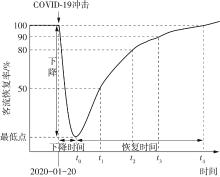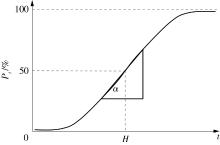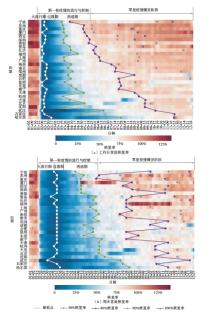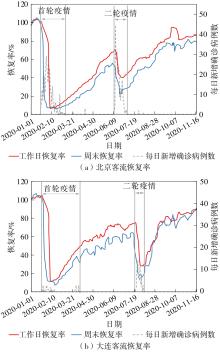| 1 |
ALEXANDER D E .Resilience and disaster risk reduction:an etymological journey[J].Natural Hazards and Earth System Sciences,2013,13(11):2707-2716.
|
| 2 |
HOLLING C S .Resilience and stability of ecological systems[J].Annual Review of Ecology and Systematics,1973,4(1):1-23.
|
| 3 |
JHA A K, MINER T W, STANTON-GEDDES Z .Building urban resilience:principles,tools,and practice[M].Washington D C:World Bank Publications,2013.
|
| 4 |
王思斌 .社会韧性与经济韧性的关系及建构[J].探索与争鸣,2016,1(3):4-8.
|
|
WANG Sibin .Relationship and construction of social resilience and economic resilience[J].Exploration and Free Views,2016,1(3):4-8.
|
| 5 |
SERAFIMOVA T .COVID-19:an opportunity to redesign mobility towards greater sustainability and resilience?[M].Florence:European University Institute,2020.
|
| 6 |
HALLEGATTE S, RENTSCHLER J, ROZENBERG J .Lifelines:the resilient infrastructure opportunity[M].Washington D C:World Bank Publications,2019.
|
| 7 |
ZHU Y, OZBAY K, XIE K,et al .Using big data to study resilience of taxi and subway trips for hurricanes Sandy and Irene[J].Transportation Research Record:Journal of the Transportation Research Board,2016,2599(1):70-80.
|
| 8 |
HOSSEINI S, BARKER K .Modeling infrastructure resilience using Bayesian networks:a case study of inland waterway ports[J].Computers & Industrial Engineering,2016,93:252-266.
|
| 9 |
MIRZAEE S, WANG Q .Urban mobility and resilience:exploring Boston’s urban mobility network through twitter data[J].Applied Network Science,2020,5:1-20.
|
| 10 |
叶建红,梁源,张宇飞,等 .重大突发公共卫生事件下交通运输应对策略——新型冠状病毒肺炎疫情的回顾性分析[J].城市交通,2020,18(3):71-79.
|
|
YE Jianhong, LIANG Yuan, ZHANG Yufei,et al .Transportation strategies under public health emergency:a review of COVID-19 pandemic[J].Urban Transport of China,2020,18(3):71-79.
|
| 11 |
罗炯,黄靖翔,周溶伟,等 .疫情下的地铁客流特征分析及管控——以深圳地铁为例[C]∥2020年中国城市交通规划年会论文集.北京:[出版者不详],2020.
|
| 12 |
赵卫华 .新冠肺炎疫情之下居民“生活韧性”分析:一个理论框架及实证检验[J].江苏社会科学,2021(3):78-89.
|
|
ZHAO Weihua .Analysis of residents’“life resilience”under the COVID-19 pandemic:a theoretical framework and empirical test[J].Jiangsu Social Sciences,2021(3):78-89
|
| 13 |
ADGER W N .Social and ecological resilience:are they related?[J].Progress in Human Geography,2000,24(3):347-364.
|
| 14 |
WALKER B, HOLLING C S, CARPENTER S R,et al .Resilience,adaptability and transformability in social-ecological systems[J].Ecology and Society,2004,9(2):5.
|
| 15 |
FERNÁNDEZ-PRADOS J S, LOZANO-DÍAZ A, MUYOR-RODRÍGUEZ J .Factors explaining social resilience against COVID-19:the case of Spain[J].European Societies,2021,23(Sup1):S111-S121.
|
| 16 |
ALOI A, ALONSO B, BENAVENTE J,et al .Effects of the COVID-19 lockdown on urban mobility:empirical evidence from the city of Santander (Spain)[J].Sustainability,2020,12(9):3870.
|
| 17 |
GAO J, WANG J, BIAN Z,et al .The effects of the COVID-19 pandemic on transportation systems in New York City and Seattle,USA[EB/OL].(2020-05-03)[2022-11-06]..
|
| 18 |
EISENMANN C, NOBIS C, KOLAROVA V,et al .Transport mode use during the COVID-19 lockdown period in Germany:the car became more important,public transport lost ground[J].Transport Policy,2021,103:60-67.
|
| 19 |
TAN L, MA C .Choice behavior of commuters’ rail transit mode during the COVID-19 pandemic based on logistic model[J].Journal of Traffic and Transportation Engineering (English Edition),2021,8(2):186-195.
|
| 20 |
BRUNEAU M, CHANG S E, EGUCHI R T,et al .A framework to quantitatively assess and enhance the seismic resilience of communities[J].Earthquake Spectra,2003,19(4):733-752.
|
| 21 |
CONTRERAS D, BLASCHKE T, TIEDE D,et al .Monitoring recovery after earthquakes through the integration of remote sensing,GIS,and ground observations:the case of L’Aquila (Italy)[J].Cartography and Geographic Information Science,2016,43(2):115-133.
|
| 22 |
李亚,翟国方 .我国城市灾害韧性评估及其提升策略研究[J].规划师,2017,33(8):5-11.
|
|
LI Ya, ZHAI Guofang .China’s urban disaster resilience evaluation and promotion[J].Planners,2017,33(8):5-11.
|
| 23 |
中华人民共和国国家卫生健康委员会 .疫情通报[EB/OL].[2022-11-26]..
|
| 24 |
CHEN X, TIAN T, ZHANG H,et al .Recovery patterns and heterogeneity of rail transit under impact of COVID-19 pandemic[C]∥Proceedings of the Transportation Research Board 101st Annual Meeting.Washington D C:Transportation Research Board,2022.
|
| 25 |
PARKER K, HOROWITZ J, MINKIN R .COVID-19 pandemic continues to reshape work in America[R].[S. l.]:[s. n.],2022.
|
| 26 |
张品立,姚瑶 .疫情下的上海市公共交通及运行管理思考[J].交通与港航,2021,8(3):79-84.
|
|
ZHANG Pinli, YAO Yao .Study on the public transport and operation management in shanghai under the pandemic situation[J].Communication & Shipping,2021,8(3):79-84.
|
| 27 |
胡松,翁剑成,林鹏飞,等 .重大疫情对乘客公共交通依赖性的影响[J].交通信息与安全,2021,39(3):17-24.
|
|
HU Song, WENG Jiancheng, LIN Pengfei,et al .Impacts of major epidemic on passengers’ dependence on public transport[J].Journal of Transport Information and Safety,2021,39(3):17-24.
|
| 28 |
赵婉 .疫情防控常态化下市级政府应对突发公共卫生事件精准治理研究[D].太原:山西财经大学,2022.
|
| 29 |
刘民,梁万年 .提升城市突发疫情防控能力——以首都新冠肺炎疫情防控为例[J].前线,2022(10):28-31.
|
|
LIU Min, LIANG Wannian .Improving the city’s ability to prevent and control sudden pandemic——taking the prevention and control of the COVID-19 pandemic in the capital as an example[J].Qianxian,2022(10):28-31.
|
| 30 |
王新林 .大连市政府突发公共卫生事件应急处置能力研究[D].大连:东北财经大学,2021.
|
| 31 |
汤龙 .大连疫情防控24小时[EB/OL].(2020-07-23)[2022-11-26]..
|
| 32 |
张宇 .社会动员、政府公信力与政策遵从:风险社会韧性治理的合作逻辑[J].温州大学学报(社会科学版),2022,35(1):72-80.
|
|
ZHANG Yu .Social mobilization,government credibility and policy compliance:the cooperative logic of resilient governance in risk society[J].Journal of Wenzhou University (Social Science Edition),2022,35(1):72-80.
|







